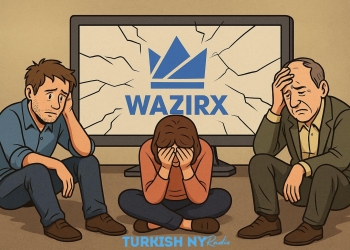The introduction of USDT services in Bolivia by Bisa Bank will benefit stablecoin Tether as the country tries to position itself as a market leader in Latin America. Cryptocurrency enthusiasts will benefit greatly from the emerging local crypto-friendly environment created by the country’s central bank.
Stablecoin adoption in Bolivia is poised to grow after the president of the Central Bank of Bolivia recently praised cryptocurrencies as a viable payment alternative, calling stablecoins a “dollar proxy.” The proclamation signalled a change of stance regarding digital currencies after the country lifted a blanket ban on their use within its financial system. Central Bank of Bolivia President Edwin Rojas Ulo also hinted at the possibility that the introduction of Bitcoin and other cryptos would be potentially beneficial to the country’s payment systems.
Tangible Surge in Crypto Adoption
Commenting on the introduction of USDT services in Bolivia, the president of the country’s banking system regulator, Yvette Espinoza, observed that the launch of the new service would “allow clients to carry out various operations safely, reducing the risk of unsafe interactions in the cryptocurrency market.” Bisa Bank customers will pay between $5 and $15 for USDT purchases between 200 and 10,000 daily, with international transfers costing at least $40, which rates are better compared to what the market currently offers. According to Bisa Bank Vice President Franco Urguidi, the ban has created a secure platform from which the USDT services in Bolivia will be offered via stablecoin USDT.
There has been a tangible surge in cryptocurrency adoption since the Bolivian government lifted a prohibition on using digital currencies last June. A recent report by the Central Bank of Bolivia showed that trade volumes increased over a hundredfold on average three months immediately after the ban was lifted. The numbers rose to $15.6 million between July and September 2024, compared to $7.6 million on average between January 2023 and June 2024.

Stablecoin Adoption in Bolivia Taking Root
Without offering the exact numbers associated with the different cryptocurrency tokens, the report further noted that the total volumes in the last three months surged to $46.9 million to surpass the cumulative volumes of the earlier six months. However, the report pointed out that most of the operations involved the use of stablecoins Tether, a clear indication that stablecoin adoption in Bolivia was taking root. According to the Central Bank, the average number of operations involving USDT services in Bolivia during the last three months grew from 155,300 to 374,000, a 141% increase during the period. The operations recorded in the report totalled 1,123,000, which surpassed the 932,000 registered operations between January 2024 and June 2024.
Before the lifting of the ban that has seemingly upped the rate of stablecoin adoption in Bolivia, the country was totally closed off to any kind of cryptocurrency trading. However, only three months following the change, reports indicate that at least $15.6 million is being traded monthly and mostly in stablecoins.
The President of Bolivia’s central bank has asserted that the authorities are paving the way to facilitate the use of crypto in the country, and it may appear like the country is catching on fast. Moreover, in addition to Bisa Bank, the Central Bank report shows that at least six other institutions are preparing to offer USDT service in Bolivia, pointing to the presence of a population that seems eager to take advantage of the emerging trend, especially in relation to cross-border payments.
Conclusion
It is worth noting that while crypto adoption is high within Latin America, where El Salvador leads the way after adopting Bitcoin as legal tender in 2021, stablecoin adoption in Bolivia points to a different kind of wave. Meanwhile, other Latin American economies like Brazil and Argentina seem to be taking a cautious approach.
The decision by Bisa Bank to introduce USDT services in Bolivia to adopt cryptocurrency use could eventually become a blueprint that other nations facing economic challenges could end up following as more people become aware of cryptocurrencies and stablecoins. While stablecoins have their pros and cons, it looks like the introduction of USDT services in Bolivia is pushing the country full steam into the emerging world of cryptocurrencies.






























































































![BitTorrent [New]](https://s2.coinmarketcap.com/static/img/coins/64x64/16086.png)















